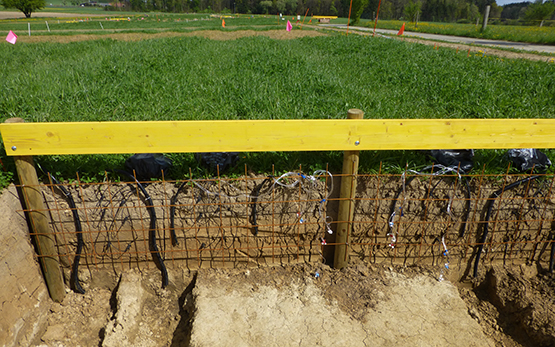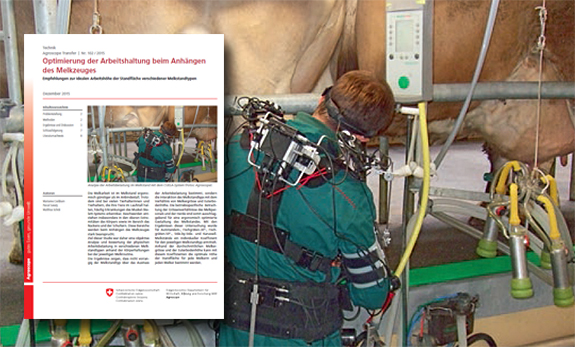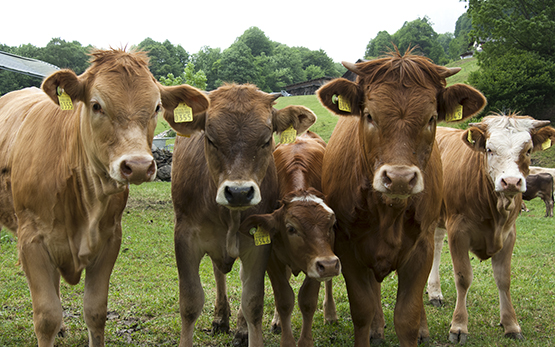Meyer M., Contzen S., Feller M., Pauler C., Probo M., Röösli A., Schmidt R., Schneider M.
Resilience of Swiss summer farms: An interdisciplinary analysis of key challenges and adaptations.
Agricultural Systems, 227, 2025, Article 104365.
Dreier M., Bettera L., Berthoud-dit-Gallon Marchand H., Fuchsmann P., Tintrop L., Bachmann H.-P., Guggisberg D., Schmidt R.
How raw milk-based adjunct cultures influence microbial diversity in cheese.
International Dairy Journal, 166, 2025, Article 106249.
Guggisberg D., Zbinden D., Fehér N., Eggerschwiler L., Bosshart A., Portmann R., Egger C., Raemy M., Schmidt R.
κ-casein genotypes and minerals in raw milk and their impact on coagulation properties.
International Dairy Journal, 164, 2025, Article 106204.
Schmidt R., Bisig W., Guggisberg D., Haldemann J.
Norwegische Käseindustrie: Herausforderungen und erfolgreiche Produkte.
Foodaktuell, 11, 2024, 50-51.
Tintrop L., Dreier M., Fuchsmann P., Schmidt R.
Wie beeinflussen rohmilchbasierte Zusatzkulturen den Käse?
In: Liebefelder Milchtagung. 19. November, Publ. Agroscope / HAFL, Zollikofen (CH). 2024.
Bisig W., Guggisberg D., Haldemann J., Schmidt R.
Nachhaltige und effiziente Käseherstellung.
Foodaktuell, 10, 2024, 57-59.
Somerville V., Thierer N., Schmidt R., Roetschi A., Braillard L., Haueter M., Berthoud-dit-Gallon Marchand H., Shani N., von Ah U., Mazel F., Engel P.
Genomic and phenotypic imprints of microbial domestication on cheese starter cultures.
Nature Communications, 15, 2024, Article 8642.
Guggisberg D., Egger C., Bosshart A., Fehér N., Eggerschwiler L., Schmidt R., Portmann R.
Impact of κ-casein phenotypes on chymosin-induced milk coagulation properties: Application of diffusing wave spectroscopy.
In: International conference for cheese science and technology (Bergen, 3.-7.6.2024). 3. June, Bergen. 2024.
Guggisberg D., Egger C., Bosshart A., Fehér N., Eggerschwiler L., Schmidt R., Portmann R.
Impact of genetic κ-casein variants (A, B, E) on chymosin-induced milk coagulation properties: Application of a new LC–MS-based genotyping method.
International Dairy Journal, 155, 2024, Article 105973.
Walther B., Schmidt R.
Vitamin K in Käse.
In: Raclette Suisse Qualitätstagung. 4. Dezember, Zürich. 2023, 1-22.
Schmidt R., Somerville V., Berthoud-dit-Gallon Marchand H., Guggenbühl B., Gschwend F., Arias E.
The sensory and microbial diversity of Bernese Alp Cheese.
In: 13th FACEnetwork Meeting. 11. October, Grangeneuve (CH). 2023.
Stoffers H., Schmidt R., Bachmann H.-P.
New process for the ripening of cheese.
In: Conference 2023 Face-Network. 12 October, Grangeneuve. 2023, 1.
Fröhlich-Wyder M. T., Bachmann H.-P., Schmidt R.
Classification of cheese varieties from Switzerland using machine learning methods: Free volatile carboxylic acids.
LWT-Food Science and Technology, 184, 2023, 1-9.
Fröhlich-Wyder M. T., Guggisberg D., Bisig W., Jakob E., Schmidt R.
The total eye volume of cheese is influenced by different fat-levels.
International Dairy Journal, 144, 2023, 1-9.
Wenger A., Bär C., Portmann R., Schmidt R. S., Eugster E., Weisskopf L., Irmler S.
The aminotransferase Aat initiates 3-phenyllactic acid biosynthesis in Pediococcus acidilactici.
Frontiers in Microbiology, 14, 2023, 1-10.
Bettera L., Dreier M., Schmidt R., Gatti M., Berthoud-dit-Gallon Marchand H., Bachmann H.-P.
Selective enrichment of the raw milk microbiota in cheese production: Concept of a natural adjunct milk culture.
Frontiers in Microbiology, 14, 2023, 1-15.
Bachmann H.-P., Shani N., Kohn C., Stäger C., Schmidt R.
Globi und die Mikroben: Eine Sammlung von Milchsäurebakterien.
In: Globi und die Mikroben. 14, Publ. Globi Verlag, Orell Füssli Verlag AG. 2022, 92-95.
Bachmann H.-P., Schmidt R., Stoffers H.
Neues Reifungsverfahren für mehr Geschmack und Form.
LT Lebensmittel Technologie, 9, 2022, 22-23.
Somerville V., Showing T., Chabas H., Schmidt R., Von Ah U., Bruggmann R., Engel P.
Extensive diversity and rapid turnover of phage defense repertoires in cheese-associated bacterial communities.
Microbiome, 10, 2022, 1-13.
Guggisberg D., Loosli S., Blaser C., Badertscher R., Schmidt R.
Impact of cheese milk cold storage on milk coagulation properties, calcium contents, and cheese yield.
International Dairy Journal, 134, 2022, 1-9.









